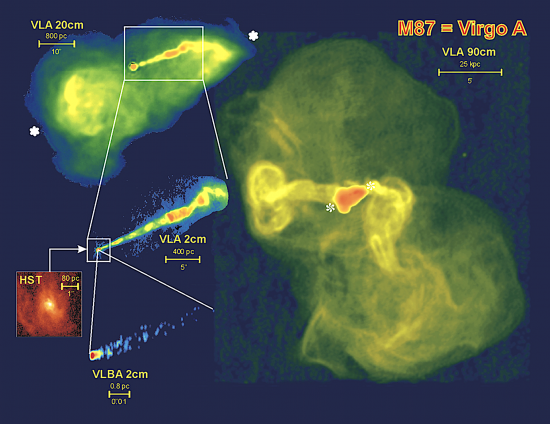
Sep 23, 2019
Plasma forms electromagnetic structures in galaxies.
According to a recent press release, the Compton Gamma Ray Observatory research team found that gamma ray bursts (GRB) “…contained time-reversed light signatures…They all have this signature of brightness that fluctuates and then it turns around and goes backwards in time,” said Jon Hakkila, an astrophysicist and associate dean of the Graduate School at the College of Charleston in South Carolina.
The consensus opinions among astrophysicists who study these phenomena is that they appear in one of two circumstances. Either a supermassive black hole (SMBH) pulls material into the SMBH, where it is accelerated by an intense gravity field; or, two neutron stars collide, which increases the gravitational force to such an extent that it collapses into a black hole. The extreme velocity supposedly heats up particles as they approach the speed of light. It is that excitation that is said to create X-rays and gamma-rays.
On the other hand, an electromagnetic z-pinch can squeeze plasma with such force that it rapidly compresses. Electric current flowing into the z-pinch might cause the plasma to erupt in an arc-mode discharge. We are seeing plasma structures when we look at nebulae, as well as the “remnants” of supernovae, and they behave according to the laws of electric discharges and circuits.
One of the signature phenomena in a dense plasma focus is the helical strands of energy that surround a powerfully radiating arc-mode discharge and a dark-current torus. The strands are helical magnetic fields that confine plasma.
It is not a black hole that forms structures around a GRB. Near the center of the Milky Way, and presumably in the centers of all galaxies, there is an abundance of electromagnetic energy. There might be 28 filamentary strands (or 56, or 49 or some other number discussed by Alfvén, Peratt, Thornhill, and others) in the penumbral cloud of stars and nebulae that have been energized by the plasma gun effect.
Birkeland currents enable electricity to move great distances through space in a manner analogous to power transmission lines on Earth. Plasma is compressed within the vortical filaments in long lines extending out from the galactic nucleus. Sometimes the “lines” are seen in galactic images as “bars” that spin at right angles to the current flowing out of the central bulge. It is in the most dense current flows where stars form. GRBs are not created by gravitational forces, but by the electric nature of the Universe and the way that moving plasma behaves in a magnetic field.
Stephen Smith
The Thunderbolts Picture of the Day is generously supported by the Mainwaring Archive Foundation.












